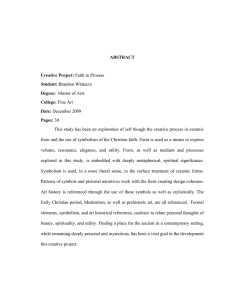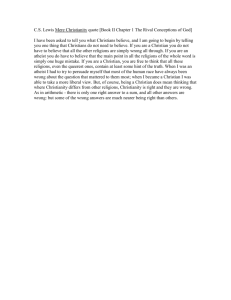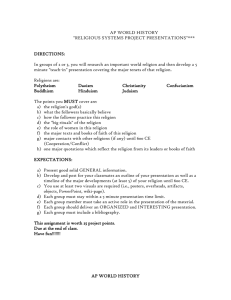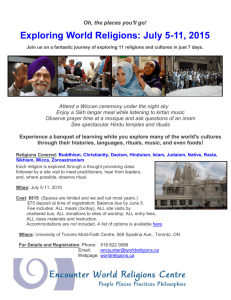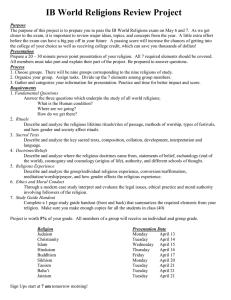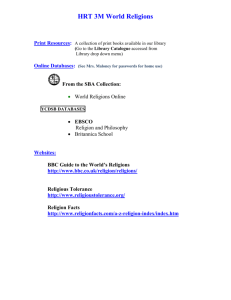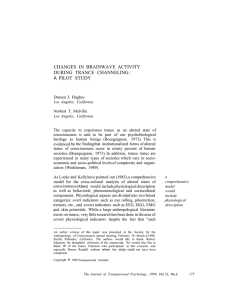Anthropology of Religion: Chapter 1 Lecture Notes
advertisement
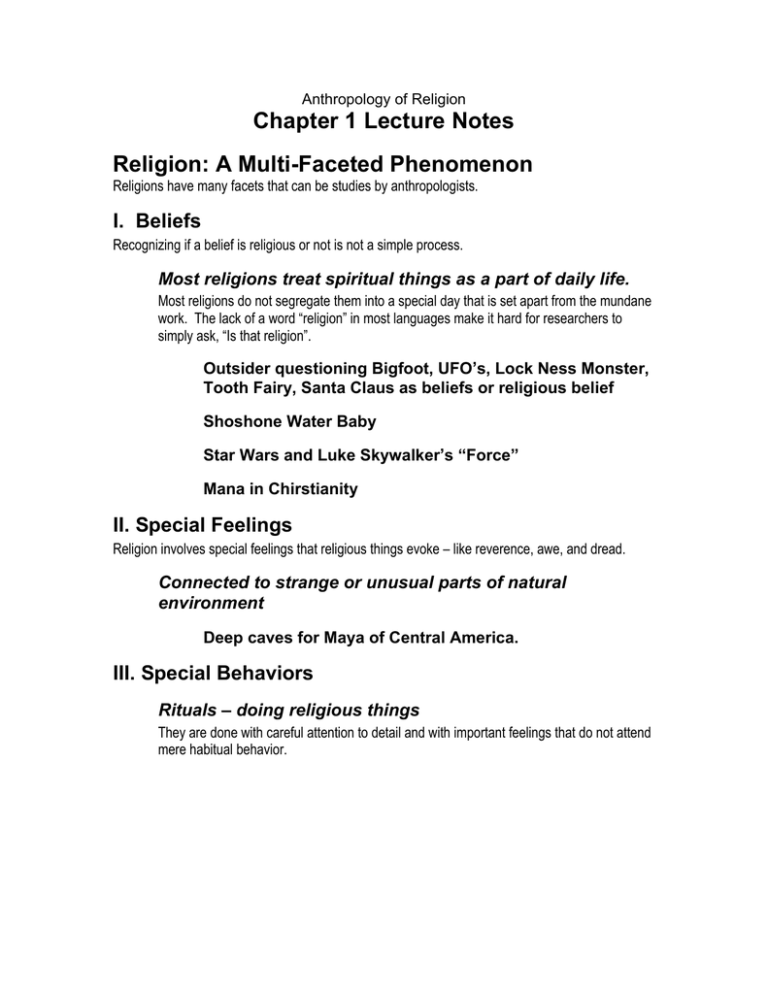
Anthropology of Religion Chapter 1 Lecture Notes Religion: A Multi-Faceted Phenomenon Religions have many facets that can be studies by anthropologists. I. Beliefs Recognizing if a belief is religious or not is not a simple process. Most religions treat spiritual things as a part of daily life. Most religions do not segregate them into a special day that is set apart from the mundane work. The lack of a word “religion” in most languages make it hard for researchers to simply ask, “Is that religion”. Outsider questioning Bigfoot, UFO’s, Lock Ness Monster, Tooth Fairy, Santa Claus as beliefs or religious belief Shoshone Water Baby Star Wars and Luke Skywalker’s “Force” Mana in Chirstianity II. Special Feelings Religion involves special feelings that religious things evoke – like reverence, awe, and dread. Connected to strange or unusual parts of natural environment Deep caves for Maya of Central America. III. Special Behaviors Rituals – doing religious things They are done with careful attention to detail and with important feelings that do not attend mere habitual behavior. Christian sacrament of the Lord’s Supper IV. Social Bonds Religion fosters loyalty to one’s community, tribe, or nation. Fourth of July celebrations in U.S. Christian denominations V. Psychology of the Religious Life Trance in Shoshone Curing ceremony Puhakanti performed curing ceremonies by smoking tobacco during ritual to help him enter a trance state and connect with his spiritual partner. VI. Symbolic Content Examine “Texts” such as written scriptures, oral stories, symbolism in rituals, symbolism in architecture. Christian Cathedrals When seen from above, they take the form of a cross – a symbol of great meaning in their religion. Jewish Mikvah Mikvah involves immersion in water – a natural symbol of life and cleansing. LDS Creation Story Symbolism of free will versus coercion has center stage and is repeatedly emphasized, thereby communicating the importance of right choice.
